Dental Restorations Part 5: Metal-Ceramics or All-Ceramics
An area where looks, quality, and reliability combine is in a metal and ceramic blend called a Porcelain Fused to Metal (PFM) restoration, or a Metal Ceramic Restoration (MCR) — two terms for the same thing.
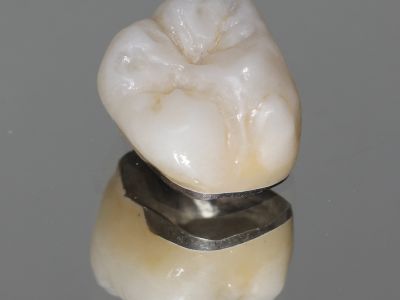
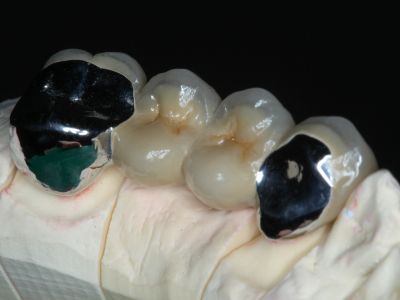
These are possible for crowns and bridges, and have been used in dentistry for more than 60 years. The tongue side of the restoration can be metal, with the visible side being white ceramic. This can be modified by personal preferences, even making the entire crown tooth-colored on the outside and metal on the inside. A common claim is that all-ceramic options make the best tooth-colored crowns or bridges. This is not entirely so. Many don't know that a PFM/MCR crown or bridge can be made to replicate the same high esthetic parameters as well. Crowns from either design can appear identical from the front. The pictures below show different sets of PFM crowns on the left three teeth. The shades are different for different cases, with varying esthetic demands, and abilities. Some choose to cover the front 4-6 teeth to get a completely identical color.

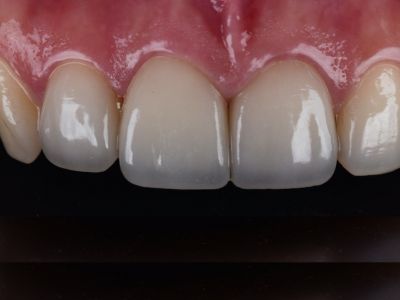
Many are surprised to learn both crown sets above have metal in them. PFMs (MCRs) can be a best of both worlds option. The metal provides strength, while the ceramic provides appearance. These metal-ceramic crowns can also use a softer type of ceramic that is then strengthened by the metal underneath - reducing the risk for this ceramic to wear down opposing teeth. The cement they use allows them to adhere very well to a tooth, and they are simple to remove if replacement is needed because the metal is discernible underneath, and the material is soft to a dental bur. These restorations also have a nice backup function, in that the metal remains if some of the outer ceramic fractures. That means there is no chance for a total through-fracture, which exists with all ceramic options. Often times, the fracture can be polished away and the restoration continues working.
PFM (MCR) restorations are common, although they are being replaced by all-ceramic alternatives. All-ceramic restorations are the newest version of inlays, onlays, crowns, and bridges that used to be dominated by metal, or PFM/MCR options. These ceramic restorations have been growing rapidly in popularity over the last 15-20 years. This is driven by a number of reasons, including people desiring completely tooth-colored restorations, ceramic options having the ability to be produced in greater number and at lower costs due to the use of milling machines, and increases in ceramic strength that previously were not possible. While PFM (MCR) crowns need physical impressions and typically two appointments to make, scanned, pure ceramic options are increasingly possible in a day (otherwise, these need two or more appointments as well). Although appealing, there are more things to consider when it comes to these restorations.
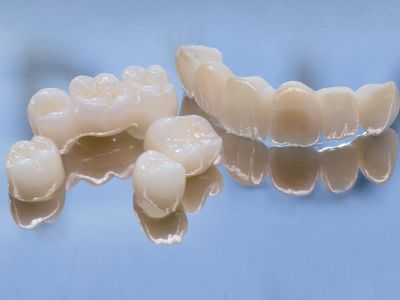
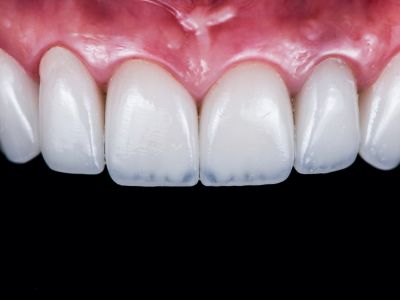
Depending on the different types of ceramic, the strength can vary. Ceramics in the middle range are common for inlays, onlays, veneers, and some crowns. All ceramic restorations can have a greater risk for fracture. As a result, more tooth structure may need to be removed to increase the ceramic thickness. This leads to a greater risk for the tooth becoming sensitive and potentially needing a root canal. The highest strength ceramics used in dentistry can avoid this, and involve a material known as zirconia. This is similar to what artificial diamonds (cubic zirconia) are made from. Dental zirconia-based restorations are heated at different temperatures, and have different materials — but the strength translates. You can hit some types of these restorations with a hammer and they won’t break. The strength of zirconia lets it perform similar to a metal, while retaining a white tooth color. In fact, some zirconia types can also stop cracks.
It is important to note, that just because a crown may be called zirconia, does not mean it is a zirconia with the full properties just mentioned. Zirconia is placed in varying amounts depending on the ceramic. If a ceramic is part zirconia, it could be described as "zirconia". True zirconia ceramic crowns/bridges that can stop cracks and perform with durability similar to a metal must be made with a certain amount of zirconia. A problem that has plagued dental ceramics since the start of their existence has been their variety and their risk for fracturing. With the technology that allows zirconia crowns and other ceramics of various strength to be made, the fracture risk has gone down. The trade-off, ironically, can also be found in the strength of some ceramics. They can be so strong that they wear down the natural tooth they chew against. One day, that tooth may need to be protected with a crown as well. The softer ceramics have less strength, but a more "lifelike" appearance, such as in the righthand picture above.
Many ceramics have the ability to be traditionally cemented to a tooth similar to MCR/PFM or all-metal option, but the cement may have difficulty holding the restoration on the tooth. This is not a problem with MCR/PFM or metal options because the metal can be roughened on the inside, and the cement gets great retention. If you roughen a ceramic, you make microscopic cracks that increase the risk of fracturing. So the inside of the ceramic can only be altered so much, if at all. It depends on the ceramic. As a result, the all-ceramic restoration may have a greater risk for coming off the tooth. What more, dental cements are relatively soft, and can allow the ceramic to microscopically flex, also risking cracks or fractures. To prevent these problems, many ceramics have to be adhesively bonded to a tooth - basically using a very hard, strong glue - which is an advantage and a disadvantage. In the same way bonded composites can be affected, so too can these adhesive agents. Acid foods (such as tomatoes, oranges, lemons, etc), drinks (coffee, soda, orange juice, etc), and plaque all cause these adhesives to be particularly vulnerable. Metabolism of the bonding agent from enzymes in the tooth will also occur over the restoration's lifespan.
Regarding cracks or fractures, any all-ceramic restoration can experience a crack or fracture - even the strongest of zirconias. Unlike a part-metal, part-ceramic crown or bridge that can many times be polished and continue working, a fractured ceramic restoration almost always always destroys the restoration, causing it to need replacement. If the ceramic restoration is bonded ("glued") to the tooth and fractures, it may be almost impossible for a patient to remove the remaining broken restoration from their tooth without a dentist, and sharp pieces may cut the tongue or other tissues and until a dentist is found.
While there are some specific risks to ceramic crowns, these options represent the newest generation of dental science, and have opened enormous possibility for treatment. A digital, 3-D manufacturing machine is typically used to make these restorations, rather than a human who physically sculpts the material. As a result, ceramic restorations can be produced efficiently and rapidly, allowing a lower cost for dental care. This works very well with third party insurance that allows lower cost dental care. All-ceramic options can have low-cost and expensive versions, with the latter being able to mitigate some of the risks mentioned. It all depends on who makes it and how they do it. With the highest standards, you can get very good results. In the current world with large businesses involved in dentistry, cost-cutting, and other factors striving for increased efficiency, you have to make sure your restoration is made well. Very low-cost, or cheap dental options can open doorways for these to be made with lesser-grade materials or oversight, and these restorations can be particularly easy for labs in other countries to make and import for an additionally low cost. Desiring to get 10 years or more from a ceramic crown is a good overall range in this author's opinion. The varying fit, cementation abilities, and chances for a fracture may contribute to how these restorations perform through that timeframe and beyond.
With advances in material science, ceramics have become more predictable with clinical results that make many happy. While more variables can affect these, the science now allows them to look great, retain long-term performance, and offer new benefits that contribute to their overall success. With more ceramic material being employed in dentistry, esthetics, durability, and affordable treatment is becoming increasingly possible.
